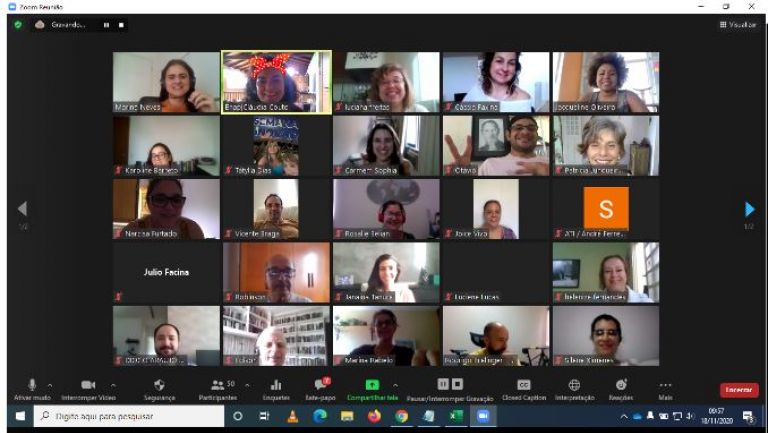Sign up for our monthly newsletter

What Guinness taught me about improving food security for smallholder farmers in Ghana
In the sweet smoky heat and humidity of Ghana, the locals love to drink Guinness. Perhaps this has come about through a piece of marketing finesse rather than a dire shortage of stout on the market, but clearly locals have embraced it in a way we in Australia would never have considered. This is perhaps a fitting analogy for the project I was working on with our ThinkPlace Kenya studio, to see what role good agricultural practices and Information and Communication Technologies (ICT) might play in helping Ghana’s farmers to achieve better financial stability and food security.
We discovered early on that farmers aren’t crying out for ICT, so our first step was to find out why. Fortunately for me, this meant a trip out to farming communities in Ghana to learn about their current practices and how ICT could make a difference. The aim was to find what would motivate farmers to try something new, like a Guinness on a hot steamy evening.

It’s tempting to assume that illiterate farmers with no food security simply don’t know the latest farming techniques, so they would jump at a change in the system that gives them more profit. In this line of thought, we would build a marketing campaign to promote better farming practice, like advertising Guinness as a winter drink. However, like many other aid projects in this space, such solutions only work while the funding is there and then fall over once the aid money stops. Moreover, we quickly realised that while farmers may be illiterate, they are not looking out for a different business strategy, the same way that they are not looking for a tasty winter stout. Many farmers are illiterate, but even those that aren’t generally don’t feel the need to upgrade their ‘yam’ (think old Nokia phone) to a smartphone. The only way to bring ICT to these farmers was to find a solution that would resemble and respect the way they currently do things.
Like many things, it’s time and money, but also the right motivation
Rather than simple ignorance, we found that many farmers actually do know good agricultural practices but lack the time and money to implement them. Many talked about how they were taught to plant in rows by Ghana’s Ministry of Food and Agriculture and that they had far better success with their crop yields than if they scattered their seeds. However, the practice is more time intensive, which translates to more work or the cost of hiring extra labour to help. In some business strategies, a more successful crop is worthwhile because it pays for the extra cost of producing it. However, the farms didn’t appear to feel the profits of their bumper harvests. The next step was to follow the money – how did they use their increased income? Could farmers get a loan to cover their next planting season and sustain the practice with the future profits?
We learnt that many farmers don’t treat their farms as expanding businesses. They simply farm to support their children’s education, so any extra profit will go towards feeding the family and school fees – not to improving farming techniques. Unlike other business, farmers’ spending isn’t motivated towards the farm’s growth and profit alone. That money from the initial bumper harvest would have been spent on keeping the kids in school and improving the family home or helping out others in the extended family or community. Our suggestions for ICT, then, would have to take this mentality into account: farmers would be inspired to try a new technique if they believed it would help them better support their family. A solution that asked farmers to spend more on their farms simply for the extra profit of the technique would fail, because that’s not what these farmers care about. Similarly, Ghanaians just aren’t looking for a winter drink to take the place of Guinness. Understanding the context proved crucial to knowing how best to address the problem.
Repetition and reinforcement
Another barrier to adopting new farming techniques is lack of familiarity and a perception of risk. Even if a farmer has the time and money to try a new technique, they may feel that it is risky to throw money into something they have never tried before. Our solution was to better coordinate the power of the various channels in our ICT toolkit, making sure people on the ground had video demonstrations and printed material, reinforced by a local program on radio, a TV show and community learning sessions.
Coordinating information about a new technique across these channels reduces farmers’ perceived risk of spending money on the technique. If they hear a local farmer on the radio who has had success using a certain fertiliser or seed, other farmers are more likely to give it a go. Lead farmers get great satisfaction in passing on techniques to others and if the farmers are already primed and interested about the idea through radio and TV, passing on the technique in person may be very successful.
Locally driven, human centred solutions
So what did Guinness teach me about improving smallholder farmers’ food security? Mainly that you can’t just waltz into a developing context and assume that whatever worked back home will work overseas too. To find the right solution we must first understand the current context, and most importantly, not assume that the current way of doing things is wrong.
Guinness was able to sell its product because it changed its marketing to appeal to the local audience. For our ICT based project, we needed to understand how to make a change to current practice that would be desirable and perceived as low risk, incorporating current non-ICT practice and the promotion of the change into the existing networks of trust. Perhaps Guinness saw that people in Ghana enjoy a drink at the end of a hot day and transformed their product around and into this part of the culture.
If the proposed solution does not address local practices and motivations, it is unlikely to be adopted no matter how much an outsider talks about the advantages of the practice. Instead, we should first take the time to learn what kind of change people really want to achieve. We should be prepared to be wrong about what we think is the ‘right’ way of doing things, like assuming that Guinness is meant to be a hearty warming winter drink. This belief is a core part of ThinkPlace’s User Centred Design methodology – to ask and learn about how people do things, rather than preaching ‘best practice’ solutions at them.






